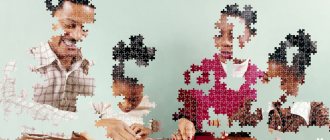Psychodrama is a method of psychotherapy in which people experience their pain through theatrical play. This technique helps to work through traumas, resolve conflicts, and improve relationships in the family, team, or other group. In addition, psychodrama helps to put an end to relationships with that person who has died or with whom it is impossible to contact.
The technique is suitable for working through past traumas, solving psychopathological problems in the present and visualizing a happy future. Let's take a closer look at what psychodrama is in psychology and consider its basic concepts.
Definition of the concept of method
The author of the psychodrama method is American psychiatrist and social psychologist Ya.L. Moreno. The psychodrama method was founded in the 20s of the 20th century. If we talk about the opening briefly, Moreno was inspired by the role-playing games of children, the sincerity and openness of the participants. The name of the technique is derived from two Greek words: psyche, which translates as “soul”, and drama, which means “action”.
Psychodrama is a method of group psychological therapy based on plot-role play. One person is the main character. All other participants are performers who help the main character solve the problem. The roles are strictly assigned by the presenter (psychologist). The main character plays himself, the rest of the people copy the verbal and non-verbal characteristics of the characters they got.
In psychology there is still no single definition of the concept of “psychodrama”. However, all psychologists agree that this technique allows a person to reveal his creative potential, become better acquainted with his inner world, develop and improve skills in interacting with society, and change his beliefs, attitudes and attitude towards current events. This is the goal of psychodrama. Psychodramatic, emotional feeling is what underlies healing through psychodrama.
The founder of psychodrama, Ya.L. Moreno called this technique art. The psychologist gave the following definition to this method: “Psychodrama is a method in which the truth of the soul is learned in action.” The main thing in this technique is play, improvisation, action. To fully understand your problem, you need to fully feel it and live it. Playing back allows you to look at the problem from different angles, remember and see something important that was missed until that moment. Psychodrama helps a person look into himself and change his thinking and behavior.
Psychodrama involves 5 main elements:
- Protagonist. This is the main participant of the session. He tries to understand himself, the other participants help him in this. He plays himself. The goal is the maximum disclosure of the true Self. It is extremely important that a person throws away all prohibitions and masks and becomes who he is. That is, it turns out that, on the contrary, he needs to stop playing, relax and give free rein to his feelings, thoughts, and emotions. During psychodrama you can do whatever you want.
- Director (psychologist, presenter, therapist). He helps to recreate the situation and distribute roles, guides, supports, controls. He does not indicate what to do and to whom, the protagonist is in charge of everything, but the psychologist helps to interpret everything that happens. In addition, the psychologist monitors the safety and health of all participants in the process, maintaining communicative and emotional interaction.
- Other Selves Follow the instructions of the presenter and protagonist, help the main character lose the problem. Others depict significant characters from the protagonist's life.
- Spectators. Active observers, listeners. They express their attitude to what is happening, support or criticize. At this time, the audience themselves are charged with emotions, and the protagonist reveals himself more actively. At any moment, one of the spectators can become a participant in the unfolding drama.
- Scene. The room itself, the platform where the action takes place. Moreno had a special, complex, multi-level design. Nowadays they don't pay much attention to this.
Psychodrama treatment is appropriate for psychological trauma. But besides this, psychodrama is suitable for working with dreams, fantasies and for preparing for upcoming stressful events. For example, you can play up an upcoming presentation with a report at work, reproduce the successful development and completion of the situation. This will help relieve stress before the upcoming real performance.
Interesting! Psychodrama is a method of group and individual psychotherapy. In the latter case, other people can be replaced with any objects.
The process of personality development in ontogenesis, according to this concept, is the process of mastering a role and the behavioral, emotional and cognitive content behind it, through a series of stages: 1) primary interactive unity of mother and child; 2) interest in the mother, to whom the child pays attention; 3) observation of the situation of interaction with the mother and the relationships manifested in her; 4) external imitation of seen attitudes and relationships; 5) internalization of relationships as one’s own ways of reacting and experiencing; 6) exchange of relationships or relationships, as a result of which the internalized role can be perceived as if from the outside and subject to reflexive comprehension. Subsequently, one’s own relationship and interaction with various aspects of reality is built on the foundation of the learned role.
- Through the phenomena of the first stage of the process of role development, it becomes clear how the attitude towards the world is mediated by the attitude towards other people and those genetic prerequisites for the dialogic interaction possible between two subjects, as described in the works of M.M. Bakhtin, M. Buber, S.L. Franka, S.L. Rubinstein. The primary unity with “you” defines and makes possible the very being of “I”. “I” is a separate self-sufficient being not because of its self-sufficiency (in cognitive and practical activity), but because of its isolation from another “I”, because of its opposition to “you” and, therefore, because of its connection with it in this confrontation " / Florenskaya T.A. Psychological problems of dialogue in the light of the ideas of M.M. Bakhtin and A.A. Ukhtomsky / Communication and mental development. M.: 1986. S. 21-31. Frank S.L. Spiritual foundations of society. M.: Republic, 1992 510 p., p. 50-53./ M.M. Bakhtin wrote a lot and convincingly about the initial unity of “I-Thou” as a prerequisite for dialogical interaction: “To be means to be for another and through him. A person does not have an internal sovereign territory, he is always entirely on the border, looking inside himself, he looks into the eyes of another or through the eyes of another /25, p. 312/. In consonance with this is the statement of M. Buber: “... through You, man becomes I” / Buber M. I and You. M.: Higher School, 1993. 173 p. 58/. In all the above statements, the other is affirmed as a necessary ontological basis for human consciousness and self-awareness. And the initial unity of “I” and “You” is a prerequisite for the possibility of dialogue.
At the next stage of its development, according to Ya.L. Moreno, the child perceives the mother as “He” - an externally opposed object, defined through a set of specific properties and qualities - the pole of reification according to Bakhtin. However, subsequent development, during which there is a “transfer” to the child and the unfolding of all aspects of the relationship to the other, implemented at the first stage by the mother as if for two, inevitably entails the development and internalization of the emotional and cognitive content of the role of the other, the integration of the role into the structure child's personality. At the final stage of mastering the role - the exchange of roles - the other again turns into “You” - the pole of personification, according to Bakhtin. Moreno argues that it is from the phenomena of this stage that what he called tele-relationships arises, in which, along with emotional empathy, it is possible to simultaneously have a realistic assessment and understanding of the partner in his actual situation and an understanding of his “I” and his actual situation. Simultaneous existence of “I” and “You”. This role theory, unlike other role theories, is not limited to the social dimension alone, but extends the concept of role to all areas in which a person comes into contact with external reality. Moreno distinguishes somatic, mental, social and transcendental roles, as well as various levels of personal identity, which he called the “primary universe” with the somatic and mental unity of mother and child; “secondary universe”, where the child enters the world of social roles, identifying with the social roles available to him; “third universe” - the experience of identity with transpersonal existence through the assimilation of universal human values and presupposing a value-semantic attitude towards the world and others. In this case, the experience of unity occurs not at an unconscious level as in the first universe, but in the form of conscious, semantic involvement.
Any role or psychological system can be considered mature when all aspects of this role are internalized as their own ways of responding - behavioral, emotional, social and cognitive, as well as when this role is integrated into the holistic structure of the personality, as a value-semantic formation. Moreover, the transition from one level of identification to another is understood as a qualitative transformation of the entire personality, and not of its individual properties. Thus, human life unfolds in the “sphere among individuals” / Moreno Ya.L. Sociometry: experimental method and the science of society. M.: Academic project, 2001. 383 p. 47/ at the somatic, mental, social and transcendental levels in comprehensive connections with other people. Moreover, other people are not the external environment or circumstances of a person’s life, but the main content of his personality. The mechanism of role development, according to the author, is the development of different types of interpersonal interaction: from identification, which generates transference in relation to another, through empathy for body relationships, where empathy is the penetration of a person into the personal, emotional world of another, aimed at the other, but all is still a one-sided form of relationship, but the body is a two-sided, fully developed healthy mode of interpersonal relationships.
The stages of role development listed above reveal to us the internal mechanism of role acquisition. Let's take a closer look at each of them.
Embryonic stage
You should start thinking about role theory from the moment a person begins to behave. This, however, is already present at the embryonic stage. The first exclusively somatic role of man is that of the embryo in the mother's body. In this state, a person owes his physical development to the (organic) placenta. The child and mother, despite the differences in their physical structure, form a functional unity. During pregnancy, both bodies prepare for childbirth. Moreno believes that in addition to the growth of the embryo, its spontaneity, which he called the S-factor, also makes a significant contribution to this process.
In a normal birth, which German-speaking gynecologists have characteristically called spontaneous birth for a long time, Moreno sees the achievement of a long-desired goal, the first victory of a person.
First universe
The first human universe is characterized by the fact that from birth a person acts in somatic roles without being familiar with them on a conscious level. Moreno most often refers to these roles as psychosomatic roles. The term psychosomatic role, however, indicates a transition to a new role category, the category of mental roles. If this transition had not occurred, man would have remained at the level of animalistic existence. In somatic, or somatopsychic, roles, for example, in the role of receiving food, the newborn enters into a relationship with the mother and the most important properties of the world. He does not yet make a distinction between I and You, between people and objects, as well as between himself and his body. The child acts in roles without knowing them. His life is an action in somatopsychic roles, and in this action he perceives the world and himself as a single phenomenon. The first universe, as the stage at which the child perceives himself as identical with the world, Moreno calls the stage, or matrix, of universal identity . This stage is similarly described within the framework of J. Bowlby's concept of attachment, D.W.'s theory of object relations. Winnicott. We will try to integrate all three approaches in order to most fully describe the processes occurring at this stage of role development.
- The relationship in the mother-child dyad has always been the subject of close attention in psychology. The study of the mother’s influence on the health and mental well-being of the child is associated with an understanding of the importance of early communication between mother and child. It is during this period that, in communication with the mother, the child develops basic trust in the world, which cannot be replenished in later life (Erikson). “Sufficient physical and emotional satisfaction on the part of the mother forms that layer of primary trust in the world, which colors the rest of life. On the contrary, due to the mother’s inferiority or the hostility of the environment, the child develops a feeling of distrust in the world and personal instability.” Research conducted by Rene Spitz (Spitz R. Autoerotism reexamined // Psychoanal. Study Child, 1962. V.17. P. 283-315. p. 354) revealed what happens to children deprived of a strong emotional relationship with their mother in the first three years of life. It has been found to cause profound mental and physical distress.” S. Freud also derived neurotic symptoms and character traits from disorders in early childhood, linking them with specific fears and traumas of the mother.
The importance of the maternal relationship in the early stages of child development, its complex structure, and the multiplicity of cultural and individual options prompted researchers from various directions to make this period of motherhood the subject of their study. We find the most complete coverage of early infancy in the works of psychoanalytically oriented authors: D.V. Winnicott, R. Spitz, E Erikson, M. Klein, A. Freud, F. Dolto. In their works, they demonstrated the importance of early pre-Oedipal relationships in the development and manifestation of psychopathology, and also proved that all aspects (cognitive, emotional, behavioral) of relationships in the mother-child dyad are extremely important during this period. Another direction of considering the interaction between mother and child came from both psychoanalytic and ethological ideas, and the assumption of the existence of innate behavioral programs in infants that evoke the care necessary for survival and development on the part of adults. (Ainsworth and Bowlby) Ideas developed in attachment theory.
Particularly noteworthy are the conclusions characteristic of both of these directions that interaction with significant other people during this period affects the origin, nature and functioning of intrapsychic structures.. These conclusions show a clear analogy with the interpsychic form of action according to L.S. Vygotsky, who argued that every mental function appears on the stage twice - first as distributed between the child and the adult in its interpsychic form, and only then as the individual property of the child himself, i.e. in an intrapsychic form.
From the literature devoted to the analysis of the patterns of child development, it is clear that the period of infancy is divided into stages that differ in the content of the tasks solved in the dyad and the forms of interaction between the child and mother.
- The first stage of primary interaction in psychoanalysis is defined as a physiological prelude to object relations; however, it is here that the foundation of future social relationships is laid. Its duration is approximately two months. The main task for mother and baby is to stabilize physiological cycles to maintain homeostatic balance. It seems that at this stage the mother can easily be replaced by another person; However, it is not. Data indicate that the child is prepared to interact specifically with the mother. This interaction uses various physiological systems, both in mother and infant, (visual, auditory, kinesthetic, gustatory and olfactory). The infant's sophisticated biological abilities and the mother's ability to “mirror” (Winnicott) the child's affective experiences lead to the formation of a feedback system. In the term “mirroring,” Winnicott describes the mechanism of interaction between mother and child, in which the mother’s attitude towards her child, reflected on her face, is “read” by the child. By feeling what he sees in the mother, the baby forms a basic sense of goodness and security. Affective interactions between mother and child, including visual, tactile and kinesthetic experiences, provide the background against which the child begins to build a sense of self and a perception of another who is different from himself, whole and separate. This decisive contribution of the mother was emphasized by Kohut, who noted that child survival requires a specific psychological environment - the presence of responsive, expressive selves - objects that confirm to the child his natural energy and vitality. In this way, a special private form of relationship between mother and infant develops, providing the basis for proper psychological functioning in subsequent periods of development. This two-way relationship, which provides the necessary conditions for the development of the child, is possible only with a certain change in the ways of interaction with others on the part of the mother. During this period, a mother can be a “good enough mother” provided that she is in a special state of consciousness that allows her to feel the needs of her child as if she were her own, i.e. in a state of complete sensory merging with him. “This cannot be taught. The mother feels: the baby should be picked up or laid down, not touched or turned over. And only with certain external interference can a woman not be a “good enough mother” after the birth of a child” (Winnicott D.V. Little children and their mothers. M.: Independent Firm Klass, 1998. 79 p.). Summarizing Winnicott’s statements characterizing a “good enough mother,” we can say that the main condition for such an attitude towards the child is the weak expression of the cognitive component of the attitude, resulting in the meaningful characteristics of the child’s individual qualities, and the predominance of the affective and behavioral component in the maternal attitude at this stage: the mother acts in response to affective experiences . That is why any outside intervention aimed at reflecting the processes occurring in the dyad can destroy the established relationship. As soon as the attitude towards the child is drawn to the object pole of the relationship, it ceases to be a condition for the child’s full development. For his part, the child has a number of innate abilities that allow him to be in a social environment of relationships with other people.
The observations of psychoanalysts were confirmed by subsequent experimental studies, which revealed the child’s innate abilities to interact with adults. In the early 70s, experimental observations of the interaction between an infant and mother were carried out, which turned out to be revolutionary in terms of understanding the socio-emotional development of the child (Stern DN The first relationship: Infant and mother. Cambridge: Harvard University Press, 1977. Stern DN The interpersonal words of the infant. A view from psychoanalysis and developmental psychology. NY: Basic books, 1985.) Infants were discovered to have innate “abilities to establish human relationships” (Stern), so necessary for interaction with their mother and further development. Thus, it was discovered that newborns show a special interest in the sounds of human speech, preferring it to other sounds of the same pitch; moreover, they immediately distinguish the mother’s voice from the voices of other women. When looking at a living human face, infants behave differently than when looking at inanimate objects. Newborns nine minutes old react differently to angry and smiling facial expressions. Moreover, from the first days of life, infants imitate some of the actions of their adult partner. Studies have shown that a newborn will open his mouth or stick out his tongue if an adult facing him performs these actions. By widening the lips in response to the expression of a happy face of an adult, by protruding the lower lip in response to an image of sadness, and by opening the eyes and mouth in response to surprise. Thus, a newborn child has not only bioinstinctive abilities but also prosocial ones, providing the opportunity for early interaction with an adult. Representatives of the British school of object relations and American researchers close to them believed that human social relationships exist from birth and are not based on physiological needs. It was argued that the main influence on a child's development is not the satisfaction of biological needs, but early social experience.
Describing the phenomena characteristic of this stage of development Ya.L. Moreno calls it the first universe. Mother and child form an interactional unity, which is the prototype of all subsequent interactions of the child with other people, i.e. is the matrix of human social development or the “social placenta”. Just as the organic placenta provides the infant with the nutrients necessary for its organic development, the social placenta provides the basis for social development. The child does not yet perceive the mother as “You” and her taking care of herself as her actions. As part of his first experience of the world, in which there is still no differentiation between “I” and “You” and in which the child feels identity with the world around him, he perceives the mother as a part or extension of himself. The mother, for her part, guesses and understands all the feelings and needs of the child, performs all the actions that he himself cannot yet perform, but which are necessary to satisfy his vital needs. The possibility of such a maternal relationship with a child is associated with the very process of forming relationships with others in early ontogenesis, when the initial unity of “I” and “You,” preserved as the basis of all subsequent human relationships, allows one to feel the inner world of another.
In this matrix of social development, the experience of being together, feeling together and acting together between mother and baby becomes a deep experience of the newborn’s identity with the world and forms the basis for further trust in one’s own being. It corresponds to the basic trust described by Erikson. At this time, the relationship between the child and the adult is not mediated by anything - there is no objectivity and this form of communication does not carry any other content other than the merged “I and You”. The baby is entirely focused on the “You” of the adult, which is inseparable from his “I”. Although caring for a child is associated with numerous objective actions, this objectivity is not yet included in the relationship with the child. The love that S.L. Rubinstein defined it as the feeling “it’s good that you exist in the world” and in which the affirmation of human existence takes place, carried out here in its purest form.
At this stage, the baby's main task is to form a strong attachment to the mother. The infant's actions, affects, and perceptions increasingly focus on interpersonal interactions with the mother in which both participants are active. The experience of repeated close examination of the mother, who constantly interacts with the child and provides him with a sense of security, leads to the laying of feelings of object permanence and self-permanence - the source of self-awareness. The most important aspect of the mother-infant relationship during this period is the affective climate. It is the affectively conditioned and mutually stimulating dialogue that generates the environment from which object relations and intrapsychic structures arise (psychoanalysis and the school of object relations). Moreno. describing the mechanisms of further development of the primary universe, he spoke about the isolation of the mother as a special part of the child’s world, and then about the primary separation from her through imitation of her as an external, different object. Moreno calls this stage the stage of “knowing You,” since the child first identifies the Other as an object of cognition and through this selection the process of identifying “I” occurs. However, the author stipulates that this is a process of interactional cognition, cognition through external action. Awareness of one's actions is a later stage of child development.
Theoretical constructs concerning early relationships between mother and child postulate the following conclusions: the mechanisms of relationship formation in the process of early interaction between mother and child are the basis for the subsequent development of all types of human relationships to oneself, others, and the world. The relationship in the mother-child dyad is dynamic and goes through two stages in its development: primary interactional and emotional unity and subsequent differentiation between “I” and “You”.
The integral component of the first universe is the mother. She ensures that the baby has contact with the breast or bottle, takes care of him and protects him. Together with the baby, they form an interactional unity. As a result, mutual role expectations arise, laying the foundation for all subsequent role interactions of the child with other people.
By analogy with the functional unity of mother and child, which represents a matrix of organic development in the embryonic stage, Moreno considers the interactive unity of mother and child in the first universe as a matrix of human social development.
The uniqueness of human social development stems from the fact that, compared to most animals, man enters the world as a completely helpless creature, so to speak, a creature born prematurely. Premature birth makes the interactional unity of mother and child a vital requirement. The serene flow of interactions between mother and child, acting in complementary roles and emotionally fully turned to each other, could serve as a standard for all subsequent processes of body-relations (see below) . that is, the standard of situation-appropriate perception of two people of each other with the resulting adequate role expectations, which come true thanks to appropriate role behavior in creative interaction.
At the end of the first universe stage, the child begins to distinguish between the people and objects around him, and sometimes even recognize them. In general, however, he experiences them and knows them only at the moment when they are actually present. The idea or memory, if one already exists, is perceived to be as real as real people and objects.
Second universe
It is possible to play a role before becoming familiar with it and to become familiar with a role before playing it (94).
Ya.L. Moreno
The second universe appears after the child’s single perception of the world is divided into the experience of the perception of reality and the experience of the world of ideas, or, as Moreno himself formulated it, into the perception of reality and fantasy. This division occurs in the process of normal psychological development and is a prerequisite for the emergence of discursive thinking, which moves from one subject to another. Abstract thinking contributes to a gradual change in the perception of the world and orientation in it, differentiation of speech and the formation of concepts.
He must learn to live both in reality and in imagination. Preference cannot be given to one world at the expense of another. These new conditions must be dealt with spontaneously in all kinds of situations. The spontaneity of a child allows him to instantly move from one level to another. It may, however, happen that a person gets stuck at one level or another, and as a result his development is disrupted. If a person remains at the level of perception of reality, that is, within the framework of the matrix of universal reality, he is at risk of dementia. And vice versa, if he gets stuck at the level of his ideas, the arising unreal fears and desires can cause neurotic isolation from reality. In the process of normal development, the division of the world into the perception of reality and into imagination or fantasy leads to the emergence of new role categories. Along with the somatic roles and the as yet undifferentiated somatopsychic roles of the first universe, mental and social roles now come to the fore.
Third universe
Moreno's works, primarily his philosophical and poetic works, deal with the stage of human development that Greta Leutz calls the “third universe.” Similar to the experience of identity with non-individual existence in the first universe, at the stage of the third universe, identity with transpersonal existence is experienced. However, this experience of unity with the cosmos does not occur at an unconscious level, but as an experience of unity without loss of the ability to think discursively. This experience is not psychosocially obligatory. It is not accomplished only in mental or only in social roles, but is realized through transcendence to a new role category of integrative experience. Therefore, the roles corresponding to the third universe are called transcendental or integrative roles.
The processes of role development and the processes of role learning through which the transition from the first universe to the second and third occur are described by Moreno as the five main stages of role development. Each stage corresponds to a basic psychodramatic technique. By reproducing in psychodrama the processes and mechanisms of natural human development, Moreno truly creates conditions for the development of all participants in the group therapy process.
- The stage of identifying oneself with the world - the child perceives another person, the mother, as part of himself. At this stage of experiencing the world there is still no differentiation between “I” and “You”. A mother who guesses all the child’s desires and carries out the actions he needs is, as it were, an extension of himself. The child, as it were, controls the world according to his own desire (the mother acts as the world, which is why this stage is called the primary universe by the author). Associated with the psychological phenomena described at this stage is a basic psychodramatic technique - duplication.
In the process of duplication, another member of the group, performing the function of a double, expresses the feelings of the main character, detaching himself from his own experiences and feelings. The double, as if a mother trusting her instincts, indulges in feeling into the situation and experiences of the protagonist. He says what the protagonist in this situation cannot feel and say due to the repression and suppression of part of the inner world. The take’s statements are not perceived as someone else’s voice, as something separate, they are perceived as one’s own inner voice, due to which the integrity of the protagonist’s inner world is restored. At the same time, the protagonist, accepting the correct statements of the take, develops them in his monologue.
2.Stage . The child concentrates his attention on a special alien part of himself - on the mother - and the process of becoming familiar with the role begins.
- In the continuum of his experiences, this alien part of himself begins to be perceived as independent, and the child begins, like a mirror, to reflect the external manifestations of this role in his behavior. The phenomena of this stage are revealed in the basic psychodramatic technique “Mirror”. When using this technique, other group members try to mirror the client's behavior on stage. By seeing himself from the outside, the client has a chance to evaluate unproductive and destructive strategies for interacting with others and change his behavior.
- At this stage, the child not only perceives the role of another person, but can also imagine himself in this role and play it through external imitation.
- At this same stage, the child is already able to sense the internal experience, feelings and experiences behind this role. Because of this, he is able, being in the role of another person, to look at himself through the eyes of this role, to perceive himself from the outside.
The fourth and fifth stages of role development correspond to the “Role Exchange” technique. In this technique, a person gets used to the role of another, whose role he plays and tries to look at himself through his eyes.
Basic principles
Spontaneity and creativity are the main principles of psychodrama as a method of psychotherapy. Only under such conditions can a person fully open up and heal. And the main components of psychodrama according to Moreno are the theory of roles, the theory of spontaneity and sociometry.
Spontaneity theory
This means a flight of creative energy. It is either suppressed by a person, or finds expression in rapid adaptation to new conditions and new reactions in response to old stimuli. Creativity is the search and creation of something new, self-expression. In a broad sense, our whole life is a creative process.
Sociometry
A special technique that allows you to identify likes and dislikes in a group, the nature of the relationship between all participants, microgroups within the group, obvious and hidden leaders, outcasts, stars and neutrals. The result of sociometry is a detailed psychological portrait of the group (sociogram). Sociometry is needed in psychodrama so that the presenter correctly distributes people into groups.
Role theory
In psychodrama, the role is the participant’s habitual patterns of behavior. These are his verbal and non-verbal reactions in real life, his experience, beliefs, worldview. We constantly change roles depending on the situations and conditions in which we find ourselves.
Types of roles:
- bodily (somatic), for example, the role of the eater;
- mental, for example, the role of a jealous person, or a merry fellow;
- social, for example, the role of daughter, mother, wife;
- integrative (non-material), for example, the role of a believer or a person in love.
Roles are mastered in parallel with human development and precisely in the order in which we described them. Individual roles are repeated so often that they become the framework of the personality.
Preface
The first question a student beginning to study psychotherapy asks is how quickly
and
effectively
master the theory and practice of therapeutic influence. The answer to this question, no matter how important it is for the student who almost always fails to do everything on time, is very indicative for the teacher. Most teachers of psychotherapy can be divided into two types: “esoteric” and “exoteric”. The former tend to view the process of learning psychotherapy as an introduction to some kind of sacrament, revelation; second - how the solution may not be trivial, but, in general, quite accessible to students of an educational task. Accordingly, the answers to the previously posed question will vary - in one case, mastering psychotherapy will require almost your entire life, in another - the time allotted by the curriculum. Of course, the truth is somewhere between the first and second points of view and, of course, there cannot be an answer at all, without specifying which (which) methods of psychotherapy we are talking about.
Harold Stern, founder and longtime president of the Philadelphia School of Psychoanalysis, said in one of his interviews that to master most methods of psychotherapy, a careful reading of three or four fundamental books is usually sufficient. But in order, he emphasized, to master psychoanalysis as a method of treatment, intensive study of at least a hundred books is required (it is not entirely clear how such calculations are made). At the same time, G. Stern recommended taking into account the fact that psychoanalysis is the only psychotherapeutic method that requires that the future specialist himself be analyzed.
My colleagues and I believe that even very careful reading of more than four major books is clearly not enough to become a therapist. Experience in interacting with patients and supervisory training are of great importance. Therefore, we must disappoint those who hope to gain professional skills in psychotherapy only by reading relevant literature.
The second question (but by no means the least important!) asked by students beginning to master psychotherapy concerns the degree of impact of the therapeutic procedure on the patient’s personality and its effectiveness. It cannot be answered without taking into account what therapeutic methods we are talking about, without taking into account the mental (psychological) disorders with which the therapist works, without taking into account the personal characteristics of the therapist himself and, finally, without analyzing what measurement tools are used to assess effectiveness one or another therapeutic procedure. Articles and books have already been and continue to be written about each of the listed components of the effectiveness of psychotherapy, to which I refer the reader interested in these problems.
We will only briefly dwell on the current controversial issue: how personality changes as a result of therapeutic influence.
What happens to a person during psychotherapeutic influence? Does the personality change in the process of this influence? A number of researchers
[1]
believes that the most obvious therapeutic effect is achieved during the treatment of depression and individual symptoms, such as anxiety. When it comes to personality traits such as neuroticism, for example, the desired effect is not achieved. This opinion is supported by many psychologists,
[2]
concluding that psychotherapy does not act on the basic structure of the personality, but helps the patient to become more flexible in meeting his needs and using his abilities.
Strictly speaking, personality changes, in the sense of the formation of any new qualities or the “disappearance” (where?) of existing ones, do not occur
(we do not mean those cases when a psychotherapeutic effect, used along with a chemical, for example psychotropic, leads to a genuine transformation of the personality; such effects, due to their focus on ruining the individual psyche, do not change, but destroy the personality).
Any of the properties (qualities) of a personality, as is known, is a fairly stable mental formation, and their presence actually makes the personality such. These stable mental formations are little susceptible even to age-related changes. The variability of personality and its adaptation to changing environmental conditions is achieved due to the fact that each of the qualities (in their interaction with others!) has such a wide range of situationally determined manifestations that sometimes it can be perceived as the presence of a quality opposite to that which actually exists. Psychotherapeutic influence, without creating new qualities in a person, seems to bring existing ones into conformity, for example, with a changed situation in life. This “matching” ensures the success of psychotherapy for minor mental disorders.
Confirmation of our thought is the lack of lasting positive effect in cases of severe personality disorders or psychosis, well known to experienced psychotherapists.
With these diseases, more or less noticeable destruction of the personality occurs, and therefore it is not possible to achieve a sustainable effect. The psychotherapist, working with such patients, essentially strives to revive what has already been destroyed in the psyche by appealing to what has been preserved, but such an “accretion,” as in the case of tissue incompatibility, turns out to be temporary. Supporters of psychoanalysis believe that this method of therapy is most effective for serious forms of pathology. To a certain extent, its effectiveness is ensured by the duration
of the psychoanalytic process, which can last for years. Regular psychoanalytic sessions become a kind of crutches for the patient, with the help of which he wanders through life.
Anyone who begins to study psychotherapy must clearly understand not only the strengths, but also the weaknesses of those methods that are fundamental to returning the individual to psychological well-being.
All of the above was noted in the preface to the first edition and, in my opinion, has not lost its relevance today. Five years have passed. I am confident that the book has found its reader, and above all, in the student audience. They bought it, read it (witness it themselves!) and even took the time to completely copy it for the Internet.
Today's student has a much larger selection of literature on psychotherapy than he did five years ago. One might even say that today it is not difficult to get lost in this diversity. Nevertheless, what can be called the classics of psychotherapy remains in demand, and without knowledge of these classics, modern training of future specialists is impossible. This is what the authors were guided by when preparing the textbook for republication.
It can be stated with regret that over the past years the process of dividing psychotherapy between doctors and psychologists has not stopped. Everyone pulls the blanket over themselves, and most often behind this is not a desire to help the suffering, but outright commercial interests. The realization that psychotherapy is exactly the same science as physics or chemistry, and requires the same attitude, will apparently come later. This is not the field of medicine or psychology. This is an independent science, and the sooner we recognize this, the more effectively it will develop and improve.
The authors express sincere gratitude to their many listeners, students and colleagues, each of whom contributed to the process of creating this book. Special thanks to the staff of the psychological editorial office of the Peter Publishing House.
The authors will welcome comments and suggestions from readers, which can be sent by email
L. F. Burlachuk Kyiv, August 2008
Directions of psychodrama
Modern directions of psychodrama:
- Hypnodrama. The game is combined with immersing participants in a hypnotic trance. Under such conditions, the subconscious is included in the work as much as possible, the participants relax and recover, rest mentally and somatically.
- Biodrama. People portray animals that they resemble. This technique is more often used when working with children, since it is easier for them to talk about themselves through other characters, for example, through animals.
- Sociodrama. Within a stable group, a person acts out the conflict in which he became a participant in another group.
- Puppet drama. Dolls are used instead of people. This direction is often used when working with children.
- Improvisation. There is no script, all participants act freely.
Interesting! Moreno did not leave direct instructions and theoretical foundations of psychodrama. Psychologists had to recreate the theory bit by bit using the materials that had survived. Therefore, there are many varieties of this technique, but the principles and structure are preserved.
What to expect at the meeting?
It's better not to expect anything. The classes are not the same.
Games are not repeated. Everything is born during class . Therefore, if you decide to engage in psychodrama, just trust the presenter, the people around you, and most importantly, yourself. Try to discard all masks, embarrassments and prejudices, and then you will get the maximum benefit from the lesson. You will become part of the events and be able to solve any difficult situation in the most unimaginable way for you. They won't give you advice. They may not even allow you to fully talk about all your feelings and experiences. You will be given a role. And your task is simply not to interfere with yourself.
Kinds
Moreno identified the following types of psychodrama (forms of psychodrama):
- A psychodrama led by a protagonist. The pain of one of the participants is played out.
- Psychodrama that focuses on the group. A problem involving a group of people is being sorted out.
- Psychodrama focused on the theme. A problem that is relevant to everyone present is discussed. We can talk about both internal conflicts and events in the outside world, including global news.
As for the areas of application, this method is universal. There are no special names or classifications for this. Psychodrama is suitable for working with children, adults, parents, couples, teams, companies, states, countries, etc. Psychodrama is suitable for counseling and treatment in all categories of problems.
Types of relationships
Moreno identified three types of relationships between people from the perspective of psychodrama (three types of connection):
- Transfer. One person attributes to another such negative qualities and actions that he actually does not have. Usually this happens for a reason, but based on trauma. For example, a person transfers his mother’s cruelty to all women who look somewhat similar to her.
- Feeling (in the author's terminology). A person perceives another as a separate and unique person, tries to understand him, look at the situation through his eyes, feel what that person feels.
- Tele. By this Moreno meant mutual understanding between people or mutual alienation.
The last two types are related to adequate perception and self-perception. The ability to empathize with another person and understand his attitude towards his opponent is a sign of mental health.
Stages of psychodrama practice
There are three phases of psychodrama:
- Warming up At this stage, the facilitator offers the participants several exercises for unity, getting to know each other, and recreating a trusting atmosphere. This is important so that participants can be open and talk about personal things. At this stage, topics for discussion are identified.
- Action. Direct dramatization of the selected problem. The presenter appoints the protagonist and helps him assign other roles.
- Schering. Analysis of the situation, active discussion of the completed game. The protagonist talks about what conclusions he made. The facilitator helps interpret what the person is feeling.
Participants choose one of the psychodrama techniques: duplication, mirror or role exchange.
In the first case, the other person becomes a reflection of the main character's subconscious. The understudy speaks out, portrays what is suppressed in the main person. If the understudy is right, then the hero agrees and repeats it.
When using the “Mirror” psychodrama technique, another person portrays the main character, and he looks at him as his reflection. Both help the protagonist understand himself, understand himself better, and look at himself from the outside.
Swapping roles makes it possible to look at a situation through the eyes of another person. At any moment, the main character changes roles with one of the participants and continues the game in his role. This helps you understand the other person better.
The Power of Improvisation
Psychodrama rarely uses prepared scripts
. The psychologist selects the “scene” and “images” right here and now. At the beginning of the lesson, he conducts a diagnostic survey and during the survey he tries to choose a suitable drama. As a rule, it is possible to find a topic that concerns everyone present. It doesn't matter who plays what role. There are no “main” characters and no “minor” characters. All action is left to the will of the participants, and the facilitator only slightly adjusts the process, helping the participants remove barriers.
It is in improvisation that not only an understanding of various life situations is born, but also true feelings are revealed
. Right “here and now” you can discover facets in yourself that a person did not even suspect about before. What might take several years to develop in another psychological approach is revealed here in a few hours.
Exercises
Let us briefly consider several popular exercises using psychodrama.
Shop
Participants are divided into sellers and buyers. Subsequently, dividing into pairs or subgroups, the participants reproduce conflicts and find a way out of them. Different themes are used, and participants often change roles. This exercise helps develop social and communication skills. Each participant learns to defend their position and overcome conflicts with dignity and seek compromises.
Bus
All participants are divided into “hares” (free riders) and controllers. The first sit in the inner circle, the second in the outer. Free riders make excuses, and controllers try to shame them, but at the same time put themselves in their position. At the end of the action, the participants discuss each other's game. During interaction, internal blocks, complexes and problems of people are identified, those features that prevent them from interacting with society. Each participant learns to defend their opinion, refuse, resist, and maintain composure in uncomfortable situations.
Family
The protagonist distributes roles in the game, also assigns his role to someone and describes what situation from his family the participants should reproduce. This exercise allows the main character to look at himself from the outside and look at other family members differently. After reproducing the situation, a discussion is held.











